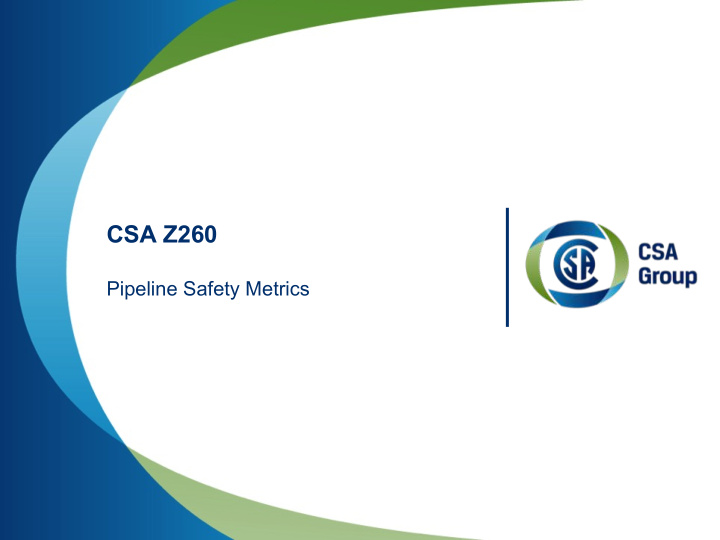



CSA Z260 Pipeline Safety Metrics
CSA Z260 - Pipeline Safety Metrics – Provide a suite of performance metrics to objectively and meaningfully convey pipeline operator performance – Define a framework for creating meaningful leading indicators – Define common terms and severity thresholds for pipeline performance – Requirements that drive continual improvement of performance
Overview • The role of metrics in managing Anything safely • Necessity of a Standard • Scope of the Standard • CSA Z260 – Approach – Application – Continual Improvement
Why do safety metrics even matter? • Demonstrated Performance • Policy Statement – what gets measured must get done • Benchmarking – peer pressure and inspiration • Process Safety – it’s the “check” in PDCA • Driver of continual improvement • Crystal ball?
What Makes a Standard Necessary? • Public Interest • Transparency and Accountability • Reporting Overload • Common Interests; Different Approaches • Reinforcing Legal Requirement and Recognized Best Practice
CSA Z260 - Pipeline Safety Metrics • Large Task Force representing Regulators, Industry Associations, Producers, Midstream, LDCs, Academia – Canadian and US • Balanced Matrix • System view - applies to: – Hydrocarbon Gathering and Transmission “Pipelines” – Liquid Hydrocarbon Storage Tanks – Pipelines for Oilfield water and Waste • Out of Scope – Local Distribution of Natural Gas (not yet) – Production Facilities/Platforms
CSA Z260 – The Approach • Performance in terms of releases (loss of primary containment) • Align with API RP 754 and describe how to apply broadly across the pipeline industry. • Bowtie (Safety Barrier) Approach to defining meaningful leading indicators
CSA Z260 – The Application • Process Safety view • Metrics developed based on failure pathway Threat LoPC Consequence (Tier 1-2 event) • Tier 3 are barriers that failed • Tier 4 are behaviours that caused the failure
CSA Z260 and the Management System • Enabler of Process Safety • Continual improvement through analysis and learning from incidents • A way to Define – Investigation Requirements – Tracking, Trending and Analysis – Discretionary Reporting (upward, outward) – Benchmarking • Focus on having sufficient incidents to learn from
Closing Thoughts Standardization of Trustworthy Incidents Data Management Continual System Improvement
Recommend
More recommend